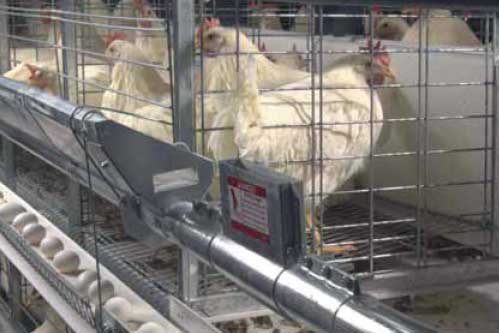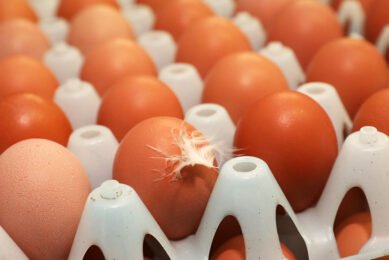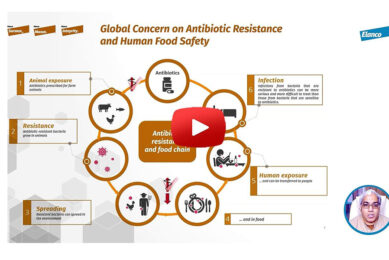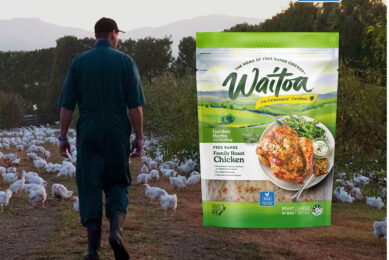Healthy animals make safer food

On the top of the list of important issues in the feed sector are feed and food safety. Many groups in society have a say in this and food scandals make huge headlines in the newspapers. Also animal husbandry is responsible for producing safe food. In the US the Council for Agricultural Science and Technology (CAST), a non-profi t organisation composed of scientifi c societies and many individual, student, company, non-profi t, and associate society members, recently presented a white paper dealing with the relationship between animal health and food safety outcomes from a US perspective.By: Dick Ziggers
The authors compiled a white paper on this issue with the objective to discuss the impact animal health has on public health risk due to foodborne illness from meat, milk, eggs, and poultry. There are many pressures and trends to change the way livestock are raised. There is a significant push for locally raised produce. In every country, economics is a leading consideration in the drive toward consolidation and intensification of production methods. Animal and human health impacts of shifting from low-cost outdoor housing to controlled environments with higher stocking densities need to be evaluated. The European Union has banned growth promoting (and disease-preventive) antibiotics in food-animal production and has begun to legislate how animals are housed (e.g., banning of gestation stalls for sows, cages for laying hens). Subsequent to these bans, treatment of pigs for clinical disease has reportedly increased in Denmark and the Netherlands. Also the trend towards organic production imply signifi cant housing changes that might impact animal health. For example, increased exposure to the soil and vermin may increase the prevalence of zoonotic diseases in livestock.
Healthy animals make safer food
The recent focus of the “One Health” concept highlights the premise that animal health is important to human health and well-being; this is particularly noted regarding zoonotic diseases, which transmit directly from animals to humans. Additionally, the impact of animal health on the incidence of human foodborne diseases needs to be considered. Conversely, there is growing evidence that unhealthy or marginally healthy (not visibly ill) animals increase foodborne risk.
The USDA’s FSIS Public Health Veterinarians and other Inspection Program Personnel (IPP) are given the responsibility through the Federal Meat Inspection Act and the Poultry Products Inspection Act for ensuring the safety and security of the nation’s food supply. This is accomplished, in part, through the examination of live animals (ante mortem inspection) for disease and through inspection of each carcass after harvest (post mortem inspection) to ensure that they are safe for human consumption. Indirect evidence suggests that subclinically ill (not visibly ill) animals also contribute to public health risk. Subclinical illness may therefore increase carcass contamination in a variety of ways. Animals stressed or immune compromised by long-term, low-grade illness are more likely to be infected with foodborne pathogens, especially Salmonella. The connection between subclinical animal health and carcass contamination with foodborne pathogens has been directly demonstrated. Russell (2003) found that chicken flocks diagnosed with airsacculitis lesions at the time of processing had lower average bird weights, higher levels of faecal contamination on the carcass, and increased Campylobacter loads on the meat than flocks without airsacculitis.
A model has been developed that predicts the increase in the days of human illness (due to campylobacteriosis) per year according to the number of subclinically ill poultry harvested. This model shows that even minor changes in Campylobacter loads in poultry products could have substantial impacts on public health. The change in human illness days is modelled as a function of the proportion of the illness rate from consuming subclinically ill but contaminated birds. The results were modelled across a range of potencies from 1 to 20; potency reflects the correlation between animal health and carcass contamination. As shown in Figure 1, the change in human illness days was very sensitive to small changes in increased animal illness percentage.
Nutrition
Adequate and proper nutrition of animals clearly plays an important role in ensuring animal health. The health of an animal is a direct function of its nutritional status. Precision nutrition for food-producing animals provides for optimum digestion, immune and endocrine functions, reproduction, and growth, as well as minimum animal impact on the environment.
Livestock producers use a variety of husbandry practices, housing strategies, and biosecurity measures to decrease disease risk and promote animal health. Such practices, designed primarily to decrease livestock diseases and improve productive efficiency, may also inherently lower the prevalence of foodborne pathogens. Stress from any source can increase susceptibility to pathogens and shedding. (e.g., molting with feed withdrawal increases Salmonella enteritidis shedding in layer hens). As an example, maintaining animals on slatted or mesh floors, as is common in modern swine production and some poultry systems, decreases animal contact with manure and thus with faecal borne pathogens and also decrease internal parasite loads.
Animal drinking water can be contaminated by manure, bird and rodent pests, and other potential disease carriers, all of which can be vectors or fomites for foodborne pathogens. Common husbandry advancements, such as the use of nipple waterers and closed, float-ballstyle watering systems, can decrease these contamination risks. The improved hygiene of swine production systems, which occurred with the transition from low-management outdoor production to more intensely managed indoor systems, is primarily responsible for the sharp reduction in Trichinella spiralis-infected pigs in the United States. This is a very significant public health improvement.
Better management
Housing livestock indoors can also provide advantages in managing many foodborne organisms. Because outdoor environments cannot be cleaned or disinfected easily, pathogens can persist in the soil, standing water, outdoor structures, and other micro-environments, infecting successive generations of livestock. Other studies have shown that Campylobacter and Salmonella are more common in chickens having outdoor exposure than in birds raised in conventional indoor housing (cages). Other common practices used to prevent livestock disease include limiting contact between groups of animals having varying degrees of pathogen exposure (e.g., “all-in-all-out” animal flow). Certain rigorous biosecurity measures are routine for some livestock farms, including requiring workers to shower, change clothes, and disinfect boots or transportable items upon entering and leaving livestock buildings. Access by outsiders typically is also limited; in those cases where visitors may be allowed, additional protective measures are enforced.
The continued questions by many stakeholders concerning the present intensive housing systems for food production animals that have been developed to maximise animal health and improve effi ciencies of production must not be overlooked. The move to less restrictive housing systems for food production animals in countries such as those in the European Union will no doubt infl uence husbandry practices in the United States.
For example, the recent move by some retailers to start sourcing poultry products from cage-free systems and pork from swine operations that do not use gestation stalls must be considered, because poorly managed, less restrictive systems can have dramatic impacts on animal health. For improvements in animal health to be adopted, however, they must also be sustainable. For example, improvements in one aspect of the production system such as health must not come at the expense of another (e.g., animal welfare). The authors see much need for research to identify sustainable food animal production practices that protect human health but also are sustainable in terms of public expectations.
The Academy of the American Society of Microbiology has made recommendations for global food safety. These recommendations include an exhortation to conduct systems-based research that evaluates the risk-risk trade-offs for suggested interventions. This issue of trade-offs between animal health and foodborne risk is one that needs further research.
The full paper, the direct relationship between animal health and food safety outcomes, CAST Commentary QTA2012-1, CAST, Ames, Iowa, can be downloaded from the CAST website at http://www.cast-science.org/













